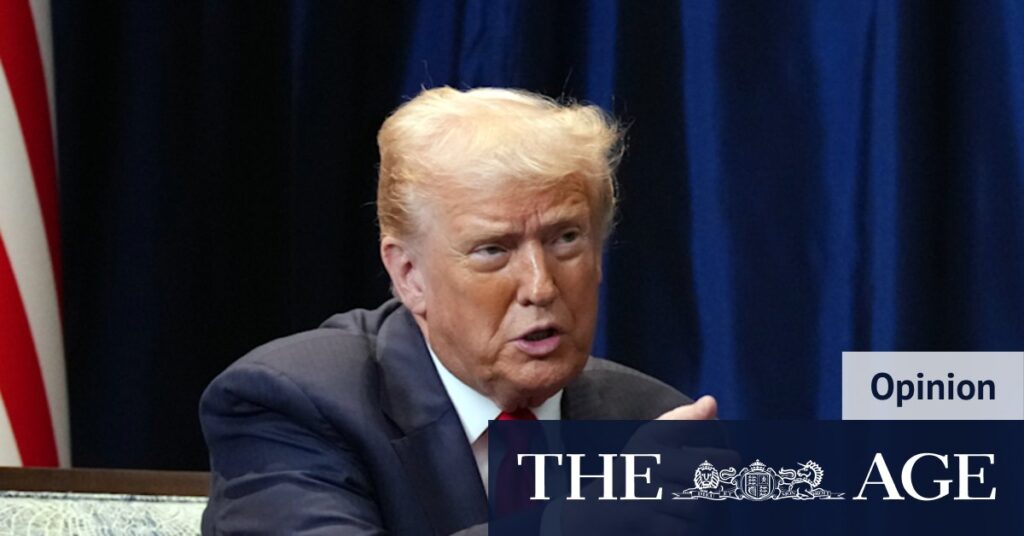
The judgment day for most of Donald Trump’s tariffs looms this week, with the US Supreme Court set to hear an appeal against a lower court’s ruling that deemed them illegal. The outcome could have significant implications for US trade policy and the economy.
Should the Supreme Court rule against the administration’s reciprocal and baseline tariffs, the so-called “Liberation Day” import levies—ranging from 10 to 50 percent against all trading partners—would need to be withdrawn. This could also mean the reversal of trade and investment deals leveraged by these tariffs and potentially require the refund of approximately $90 billion in revenue they have generated.
Implications of a Supreme Court Ruling
If the court rules against the tariffs, Trump could still impose them, but under different legislation that requires extensive investigations, or another law that limits tariffs to 15 percent and imposes a 150-day duration limit. This would significantly restrict the president’s ability to impose tariffs at will.
Trump initially used Section 232 of the Trade Expansion Act of 1962, necessitating Commerce Department investigations, for tariffs on steel, aluminum, and cars. These sectoral tariffs have not faced legal challenges. Trump has described the Supreme Court hearing as “one of the most important cases in the history of our country,” warning of dire repercussions if the tariffs are struck down.
“If a president was not able to quickly and nimbly use the power of Tariffs, we would be defenseless, leading even to the ruination of our Nation.” — Donald Trump on Truth Social
The Economic and Political Stakes
The administration’s lawyers argue that removing the president’s authority to impose tariffs could push America to the brink of economic catastrophe. They claim, “with tariffs, we are a rich nation; without tariffs, we are a poor nation.” However, these statements are contentious.
Firstly, the power to impose tariffs resides with Congress. Secondly, while the tariffs are projected to raise about $3 trillion over a decade, this is modest compared to a US federal deficit of $1.8 trillion. The US, with trade accounting for about 25 percent of its GDP, is one of the least trade-exposed economies. In a $30 trillion-plus economy, a few hundred billion dollars annually is relatively negligible.
Before the tariffs, there was no economic catastrophe. Since their imposition, the US economy has slowed, unemployment has risen, inflation has edged up, the manufacturing sector has contracted, and investment has decreased. The tariffs have introduced uncertainty and economic harm, with little impact on the nation’s wealth.
Historical Context and Future Prospects
Trump justified the tariffs citing a national security emergency due to the trade deficit and linked them to issues like fentanyl use, targeting Canada, Mexico, and China. However, the US has run trade deficits for 50 years, generally during times of increasing prosperity. The deficits stem from an imbalance between savings and investment, not unfair trade practices.
The tariffs act as a tax on US companies and consumers, with importers paying duties upon landing goods in America, which are then absorbed in margins or passed to consumers. A Supreme Court decision against the tariffs could force Trump to fill the revenue gap by reversing tax cuts for the wealthy, effectively replacing a consumption tax with increased income tax revenues.
A court defeat would be a significant embarrassment for Trump, given the administration’s aggressive approach towards allies during tariff negotiations. US Treasury Secretary Scott Bessent warned of a “dangerous diplomatic embarrassment” for the US, although the embarrassment would primarily affect Trump and his administration.
Potential Outcomes and Broader Implications
The Supreme Court, with a Republican-nominated majority, has historically expanded executive power, suggesting a possibility of overturning the lower court’s ruling. This would effectively grant the president the power to impose taxes, despite the Constitution assigning this power to Congress. A ruling in favor of the tariffs would not only expand Trump’s powers but also those of future presidents, potentially altering the balance of power between the executive and legislative branches.
The decision will be closely watched both domestically and internationally, as it could redefine the scope of presidential authority in trade matters and influence the US’s economic and diplomatic relationships.







